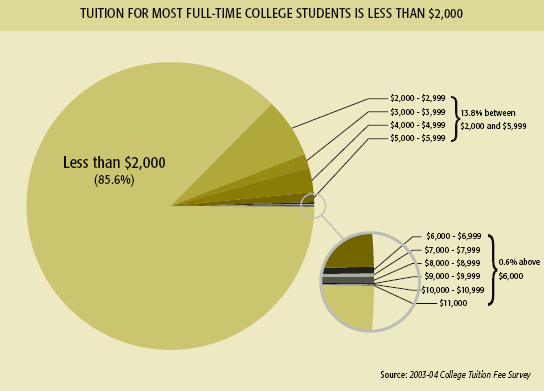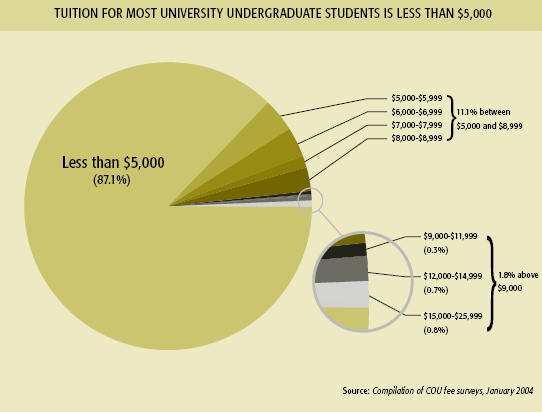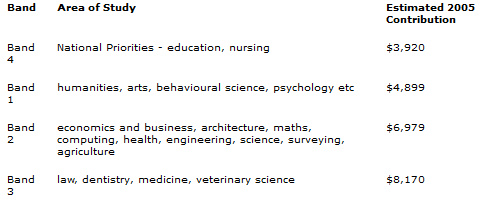 Former
Premier of the Canadian Province of Ontario Has His Say on Investing in
Universities. (August 13, 2005)
Former
Premier of the Canadian Province of Ontario Has His Say on Investing in
Universities. (August 13, 2005)
|
News & Views item - August 2005 |
![]()
 Former
Premier of the Canadian Province of Ontario Has His Say on Investing in
Universities. (August 13, 2005)
Former
Premier of the Canadian Province of Ontario Has His Say on Investing in
Universities. (August 13, 2005)
Bob Rae, as leader of the New Democratic Party, was Premier of Ontario, Canada's most populous province from 1990-95. Currently, as well as being a member of a Toronto corporate law firm he is an Adjunct Professor at the University of Toronto and a Senior Fellow of its Massey College.
In February this year Rae provided a report for the current provincial government on post-secondary education, commonly referred to as the Rae Report. It calls for increased government funding to colleges and universities, enhanced student aid, particularly for low-income students. However, the report also calls for individual institutions to be allowed to determine their tuition fees free from government controls (but note the charts at the bottom of the page).
It must be noted that in Canada postsecondary education is governed solely by the provincial and territorial governments. Accordingly, the quality of postsecondary programs is ensured through a combination of legislative and administrative mechanisms rather than by a single system of institutional or program accreditation.
The 125 page report opens with, "Education matters. It matters for each of us as individuals. It matters for our society and our economy. Yet higher education has not been the public priority it should be. The picture that the public has of our colleges and universities is a relatively benign one. The result has been benign neglect.
Higher education must be a high priority. This simple statement underlies all that follows. Our solid foundation must not be allowed to erode. Much needs to be done to improve what we have."
It is appropriate to note that according to the latest assessment of universities by the Institute of Higher Education, Shanghai Jiao Tong University, Canada's University of Toronto ranks 24th the University of British Columbia, 37th, McGill University 67th and McMaster University 90th; Australia's ANU and Melbourne University rank 56th and 82nd respectively.
Now in the August 12 edition of the Toronto based Canadian national newspaper, the Globe and Mail, Rae follows up the report in an opinion piece, "Investing in universities: Are we losing our minds?"
The premiers' decision to make higher education a priority for Canada is most welcome. It's not too late to make a difference, but decisions must be made today. We are already looking at serious shortages in the skilled trades; a generation is looking to retire. We haven't invested enough in the future, and risk losing talent to other places.
Canada risks spending too much on current consumption and not investing enough in the future. We see the visible signs of this in sagging infrastructures... [but] the under investment in people is harder to see, but its evidence is starting to show. We don't spend nearly enough on postgraduate education, and this takes its toll on innovation and productivity. We can take pride in Canadian-born Nobel Prize winners (such as chemists Sidney Altman, Rudolph Marcus and Henry Taube and physicist Bertram Brockhouse), but the fact that as young scientists they left for greener pastures is a sad reflection of a country that did not sufficiently value what they could contribute here.
...we [must not] idly wait for public demand to insist that something be done. This is one of those issues that requires a willingness to lead. Higher education urgently needs more investment (and a better combination of federal and provincial approaches to get the job done).
[And the federal government] must recognize the compelling needs for more dollars for research and graduate education. For it to do so would build on key decisions that have been made over the past half century, reinforced in several of [Prime Minister] Paul Martin's budgets when he was finance minister. The support has to be steady, consistent, and bold.
Some student organizations, and the New Democratic Party, have focused wrong-headedly on tuition as the key issue... Unfortunately, this is not true. The real barrier to access is the absence of investment in education by everyone (governments, the private sector, and, yes, students themselves). An over reliance on straitened governments for support has made our universities and colleges not only poorer, but more mediocre.
A more sensible approach would be to allow the institutions to set tuition within a broad framework, and to channel public funds to assist students who need help the most. Student aid, in the form of direct grants and bursaries, has been falling in most provinces. Skimping on bursaries and artificially freezing tuition is a recipe for both poor access and mediocrity.
But the key ingredient is leadership. If, instead, we settle for a little more money, constant government regulation and interference and bending in the wind to the latest fad, we risk losing sight of the need for a focus on both quality and accessibility.
The charts below show the current tuition rates at Ontario's universities and colleges.
With regard to Canadian colleges while some public colleges have histories dating back to the 1920s, most came into being in the 1960s. For the most part, these institutions were created by provincial governments in response to a need for vocationally oriented alternatives to university study, although some of these institutions provided university transfer programs.


 |
|
Comparable tuition at Sydney University for 2005. A$1 = Cn$0.924 |